On a recent book research trip to Laos I travelled to remote Ta-Oy, a small hill village inhabited by Ta Oi hilltribe people in the middle of Salavan Province, in Southern Laos.
When I say remote, I mean it’s the kind of place a market vendor keeps a rare jungle Marbled Cat kitten as a pet:
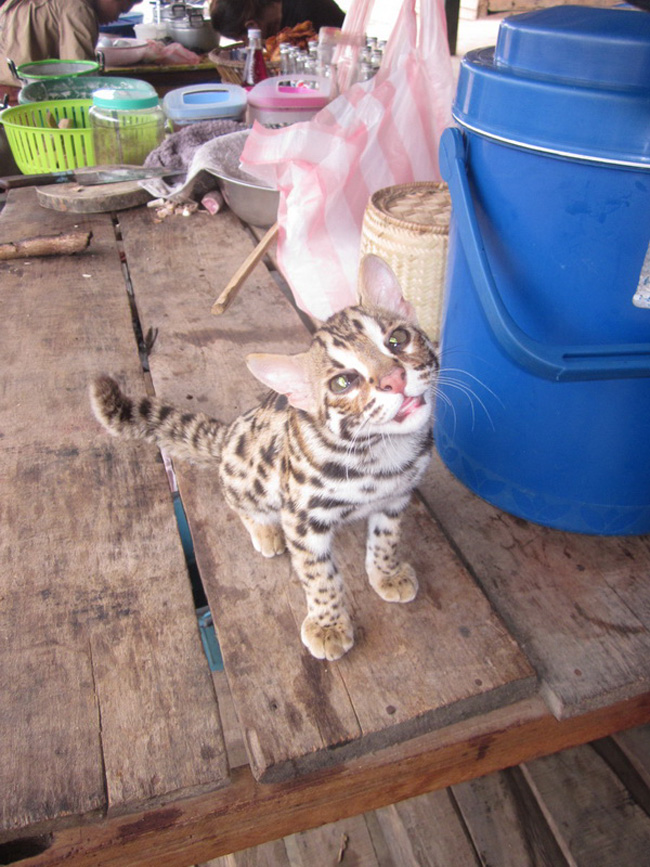
Marbled Cat kitten at play
Which, by the way, was a considerably better fate than many endangered jungle animals I saw in markets in Laos.

A Civet cat
Ta-Oy is surrounded by mountains and jungle, and tigers are still regularly spotted nearby, according to the village headman, Mr Phong.
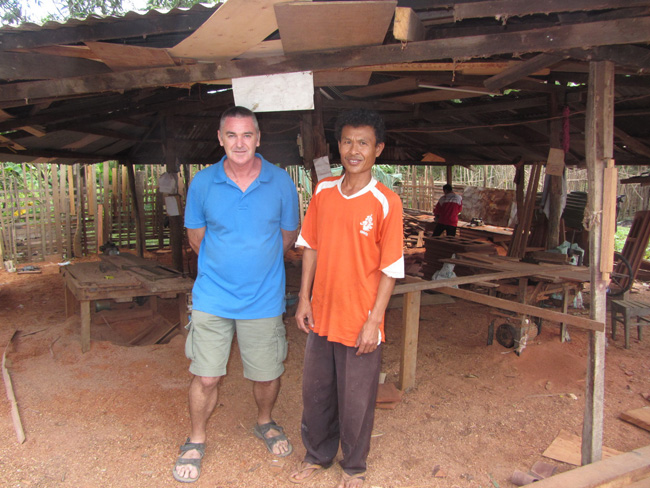
The author with Ta-Oy Village Headman, Mr Phong
To get to Ta-Oy I had to travel packed in the back of a truck with forty other people, along with chickens, ducks, sacks of rice and farming implements, which was heading to Ta-Oy from Salavan town, the provincial capital.
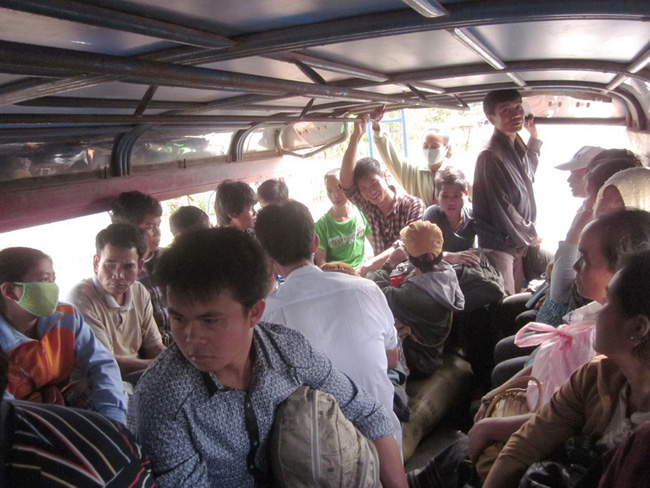
This was the truck before we picked up people and cargo along the way.
Ta-Oy is located midway between two other important Vietnam War hotspots, Xepon in the north, which was close to vital routes on the Ho Chi Minh Trail, and Salavan in the south, both of which towns were virtually obliterated during the war.
A journey of a mere eighty-five kilometers from Salavan to Ta-Oy took three and a half hours because of the terrain, the steep gradient of much of the new road, the appalling state of the truck’s gears, and its poor acceleration.
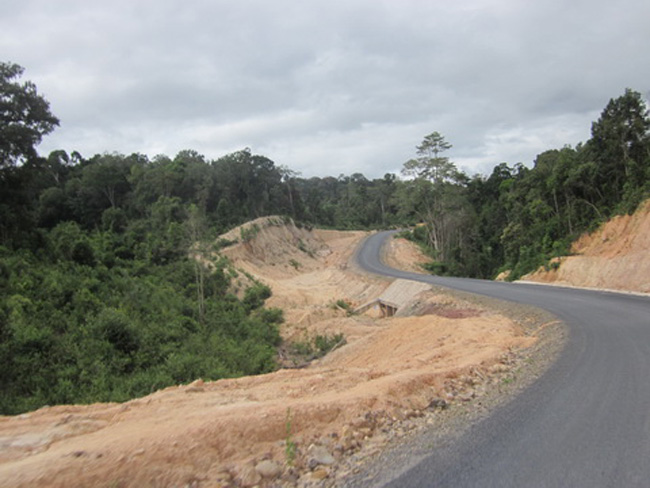
The new road to Ta-Oy
Before the new road was built, the same journey sometimes took twenty-four hours, if it was possible at all, with passengers having to overnight in a hill village en-route.
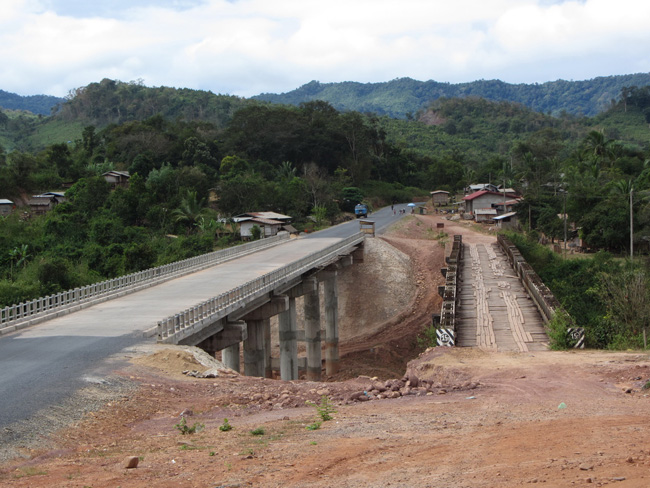
The old and the new way out of Ta-Oy
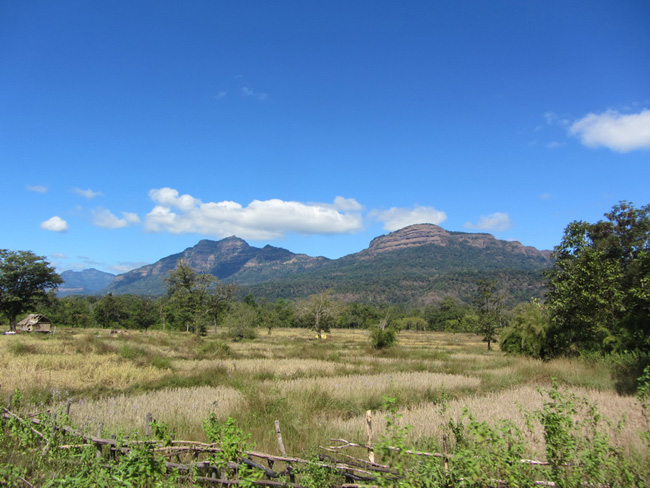
Mountains on the way to Ta-Oy
On arrival in Ta-Oy, I checked into a very basic government guest house, where I shared the use of a hole-in-the-ground toilet and what passed as a shower - a bucket of freezing cold water in a mosquito-infested bathroom; but at US$6 a room, and with no chance of upgrades in the village, it was the best accommodation available, so I wasn’t complaining.
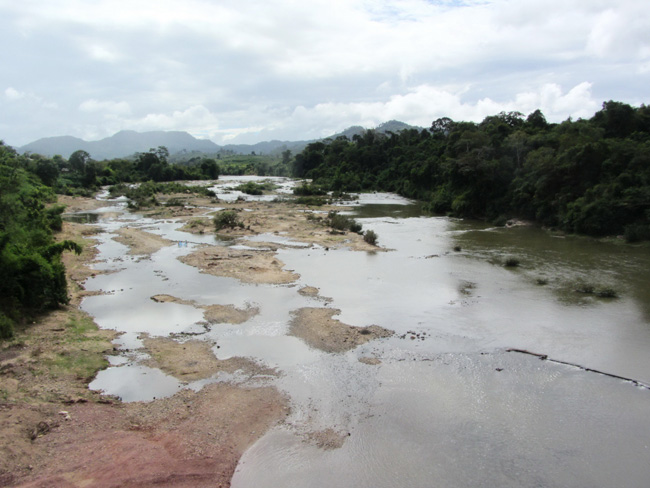
The river running through Ta-Oy
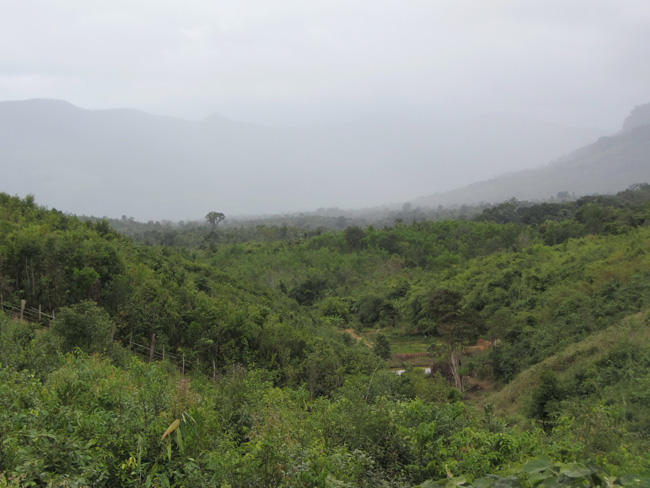
Surrounding jungle and mountains covered in cloud
I had come to Ta-Oy because I wanted to visit the Ho Chi Minh Trail, a network of foot trails, bicycle tracks and roads that ran for thousands of miles through dense, sparsely-populated jungle from North Vietnam, through Laos, Cambodia, and into South Vietnam, down which the North Vietnamese Army and Viet Cong trafficked men, weapons and supplies during the Vietnam War.

Elephants move supplies down the Ho Chi Minh Trail, 1975. Photo © Le Mihn Dien
Many trails ran through and around Ta-Oy, and it was heavily interdicted by US planes and top secret reconnaissance missions, including SOG operations, that were launched from bases in nearby Vietnam throughout the war.

North Vietnamese Engineers erect a bridge on the Ho Chi Minh Trail – Photo © Tran Phac
Although I came to Ta-Oy for the Ho Chi Minh Trail, I came away having made another very surprising discovery about the continuing legacy of the ‘Secret War’ in Laos.
One morning, I walked out of the village, smiling at the curious villagers who appeared from out of the jungle, ambling to market with goods slung in bundles on their backs. I followed a red dirt track at random, planning to head into the jungle, walking towards a river, across which one of the branches of the Ho Chi Minh Trail had run.
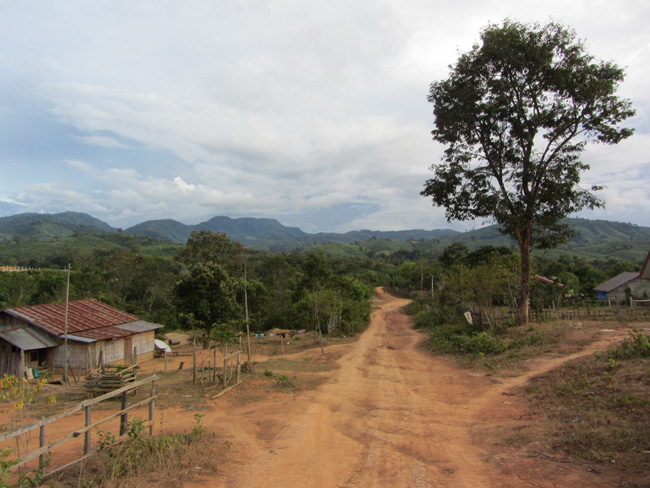
The path I took heading out of Ta-Oy and into the jungle
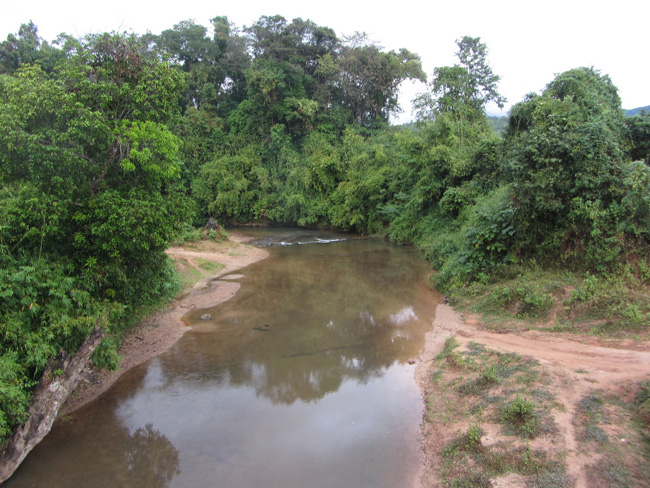
My destination – one of the old crossing points of the Ho Chi Minh Trail
It was on this walk that I made an astonishing discovery.
I came upon a compound, securely protected by a chain link fence, topped with barbed wire, which enclosed a large area of cleared ground, jammed up against the jungle and overshadowed by mountains.
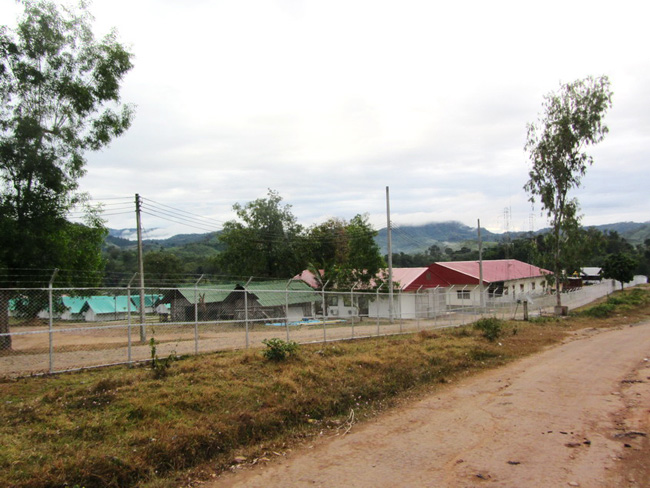
The Camp
There were no signs in English announcing what this camp was, or who ran it, which I thought odd because it looked professionally run and managed, and it was very secure. I approached the main entrance gate to ask, but I was turned away, politely but firmly, by the Laotian guards.
Intrigued, I walked down the dirt path running alongside of the camp and furtively shot off some photographs, slightly worried about getting caught.
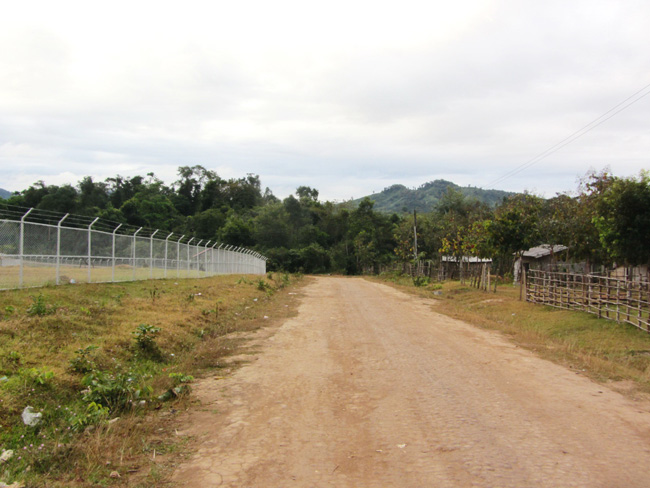
The security fence on the left enclosed a considerable area of ground.
I looked through the fence and I could see administrative buildings and A-frame accommodation, and what were very clearly Americans; US servicemen, inside the camp.
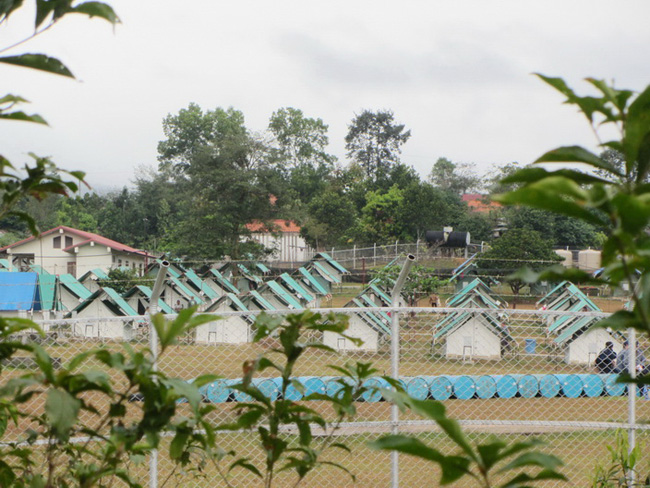
A-Frames
Elsewhere in the camp I saw two enormous, unarmed, Russian-made Hind Mil Mi-17 helicopters.
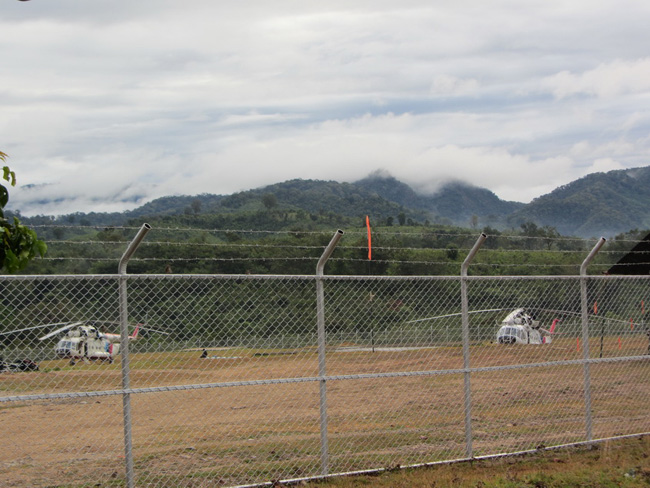
Unusual Russian helicopters parked in the camp
This was a mystery I needed to unravel, and I spent the day trying to find out about the camp. It was such a substantial facility, whatever it was, that I couldn’t understand why it wasn’t listed on any maps or mentioned in any of the guide books I’d brought. Nor could I find anything about it on the internet.
Eventually, a local informed me what it was - a US MIA camp.
But it wasn’t the kind of MIA camp many expect to find quietly tucked away in the Laotian jungle; I subsequently discovered after my visit that this one was operated by JPAC, the Joint POW/MIA (Prisoner of War/Missing in Action) Accounting Command, and it is a base camp that serves as the home of recovery teams who comb the surrounding jungle in search of the remains of US servicemen lost in Laos during the Vietnam War. The Hinds, leased from Lao Air, are used to ferry teams around the countryside.
When I got back home, I fired off emails to various U.S. Army and government departments and eventually I was able to find out more about this facility, for example that it is the only such base in Laos, making it all the more remarkable for me to have accidentally stumbled upon it that day.
Captain Jamie Dobson of JPAC Public Affairs told me it has capacity for 96 individuals, both military personnel and civilian anthropologists, along with local helpers.
Teams operating out of the camp are currently investigating sixteen sites in the vicinity of Ta-Oy, although not all of them are plane crashes. They also investigate burial sites, where some MIAs are believed to have been buried by the NVA, Viet Cong or locals after ejecting from their aircraft or having been killed in firefights or who died from other causes in the jungle.
Since the year 2000, JPAC teams have successfully recovered and identified more than 120 US service members lost in Laos, and Captain Dobson said there are currently eighty-eight locations on JPAC’s Master Excavation List, representing both crash sites and burial sites in Laos. JPAC is actively investigating roughly the same number of leads that could lead to more sites being excavated in Laos in the future.
All of which is encouraging news for families of yet-to-be-returned US servicemen still missing in Laos.
Peter Alan Lloyd (www.peteralanlloyd.com) has written a novel, Back, Parts 1 and 2, published as an e-book, following a 1968 Special Forces mission to the Ho Chi Minh Trail in Laos. This has repercussions for a group of modern-day backpackers, NYU students, including an ex-U.S. Marine, who venture back into the Laotian jungle armed with a combat journal, looking for something left behind at the end of that mission. The backpackers are confronted by unexpected dangers, both historical and modern, lurking beneath the triple canopy jungle in the war-ravaged tri-border area of Laos, Cambodia and Vietnam. Amazon: Back Parts 1 and 2. Also on Smashwords.
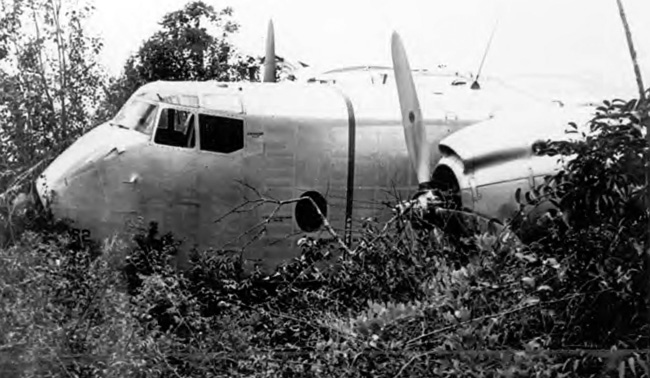
Peter Alan Lloyd is a freelance writer living in Thailand, and can be contacted at palloyd2002@yahoo.co.uk
|

